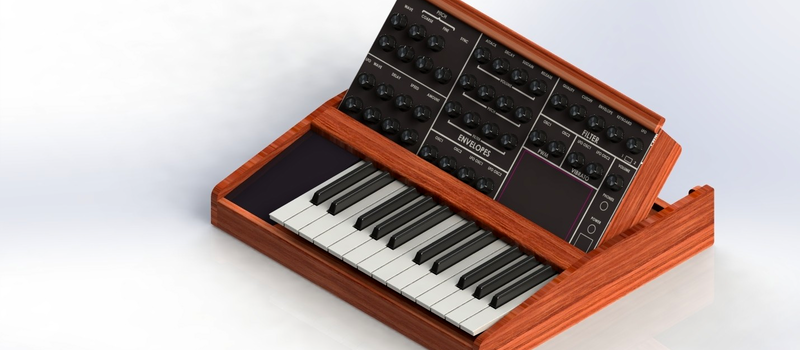For electronics aficionados, there are few devices cooler than music synthesizers. The first synths were baroque confabulations of opamps and ladder filters. In the 70s and 80s, synths began their inexorable march toward digitization. There were wavetable synths that stored samples on 27-series EPROMs. Synths on a chip, like the MOS 6581 “SID chip”, are still venerated today. For his Hackaday Prize entry, [Tim] is building his own synthesizer from scratch. It isn’t a copy of an old synth, instead it’s a completely modern synthesizer with a classic sound.
[Tim] is a former game developer and has already released a synthesizer of sorts. Rhythm Core Alpha 2 for the Nintendo DSi and 3DS is a fully functional synthesizer, but the limitations of the Nintendo hardware made [Tim] want to build his own synth from scratch.
The specs for the synth are more of a wish list, but already [Tim] has a few design features nailed down. This is a virtual analog synth, where everything is digital and handled by DSP algorithms. It’s polyphonic and MIDI capable, with buttons and dials for almost every parameter. For the few things you can’t do with a knob, [Tim] is including a touch screen display.
[Tim] already has the synthesis model working, and from the videos he’s put together, the whole thing sounds pretty good. The next step is turning a bunch of wires, breadboards, and components into something that looks like an instrument. We can’t wait to see how this one turns out!
You can check out a few of [Tim]’s synth videos below.



















Isn’t there an advantage to having the synthesis algorithms/logic run on an FPGA? That would allow very complex sounds to be synthesized. I wonder why nobody has done it. Maybe its not required after all. Just a thought.
most classic synths are fairly simple, with most of the operations being passthrough operations done with more or less analog parts, the signal one manipulates is generated by a voltage controlled oscillator.
one probably could make great fpga synths, with very flexible operation paths but i suspect it wouldn’t give any benefits in a lot of the more common use cases
there are a few fpga synths
Oh, I’m sure there is. FPGA is something that is very interesting to me, but it isn’t in my skill set at the moment. I last touched that sort of thing doing VHDL in college back in 1991, and haven’t found the right hardware set to get me back into it. But I’ve done a HUGE amount of C/C++ hacking, so I’m really comfortable with that at the moment, so that’s what you get.
If somebody wants to point me at some good and cheap FPGA resources, I’ll definitely work toward that for future versions.
Roland Aira series are FPGA based.
https://youtu.be/4oWrJ-Td4LM?t=4m26s
I would love to have hackaday.io redesigned to be more compact in design. this is ridiculous. I have a 1280×1024 screen and i am unable to see the scope of the project I am on. Just look at it. the “header” showing the viewcount is almost halfway down the window and the left half of the page is empty.
I happened to be at a secondhand furniture store this weekend and saw they had two ’70s synthesizers for sale for $80 each, no idea if they actually worked. Had me wondering what it would take to put modern electronics in them… or build new analog synth electronics from scratch, which could also be fun.
$80 for a 70 synth? there must be something wrong there…
If you lived closer, I’d be asking which stores so I could go buy them myself.
First: Putting “modern electronics” in a ’70’s synthesizer would be heresy, bad taste. And also destroy its value as an extremely expensive collector’s item. Next, no matter the condition $80 sounds like a steal. Literally!
ZynAddSubFX, one and a half megs of pure synth magic.